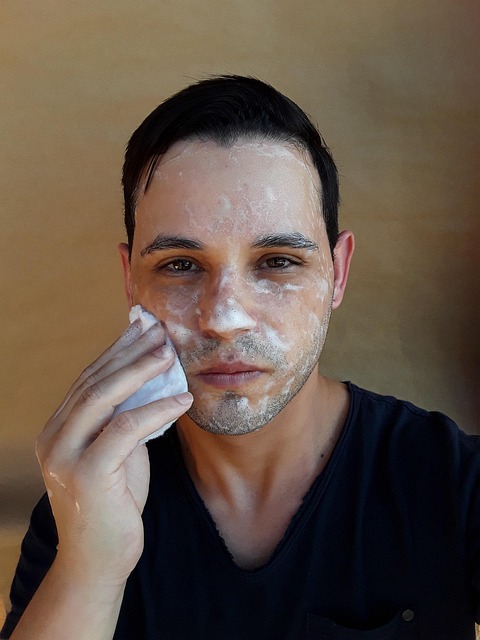Facial fillers are non-surgical treatments that enhance facial volume and contours, offering immediate results with minimal downtime. Common substances include hyaluronic acid, collagen, and synthetic materials, each with unique advantages and durations. While generally safe when administered by qualified professionals, potential side effects include redness, swelling, or inflammation, which can be mitigated by choosing experienced providers and following aftercare instructions. Different filler types cater to various needs, from subtle enhancements to longer-lasting results. Proper post-treatment care and regular follow-ups ensure optimal healing and sustained results. Long-term efficacy varies based on filler type and patient factors, often requiring touch-ups every several months to years.
“Facial fillers have emerged as transformative tools in the quest for youthful, voluminous skin. This comprehensive guide, ‘Fillers for Volume Restoration,’ delves into the intricate world of these cosmetic enhancements. From understanding the basics of facial fillers to exploring various types tailored for volume restoration, we offer an insightful overview. Learn about their mechanism of action, benefits, and considerations, addressing common concerns and providing a step-by-step breakdown of the procedure. Discover how to choose the ideal filler and expert tips for post-treatment care. Explore long-term outcomes and maintenance strategies, empowering you with knowledge on achieving lasting results.”
Understanding Facial Fillers: A Comprehensive Overview

Facial fillers are a popular and effective non-surgical aesthetic treatment, offering a temporary yet significant solution for volume loss and facial contours. These injectable substances work by plumping and enhancing specific areas, providing immediate results that can last for several months. Understanding facial fillers involves recognizing their role in restoring youthful features. Over time, our skin loses elasticity, and certain areas like cheeks, jawline, and lips may deflate or lose definition, leading to a worn appearance.
Facial filler treatments involve strategically injecting substances into these problem zones. Commonly used fillers include hyaluronic acid, collagen, and synthetic materials. Hyaluronic acid is particularly popular due to its natural occurrence in the body and ability to attract and retain moisture, resulting in hydrated, voluminous skin. This comprehensive overview aims to educate readers on the basics of facial fillers, empowering them to make informed decisions about their appearance and well-being.
Types of Fillers for Volume Restoration

When it comes to facial fillers for volume restoration, several options are available to suit different needs and preferences. These fillers range from temporary to semi-permanent and permanent solutions, each offering unique benefits. Hyaluronic acid fillers, for instance, are popular due to their natural composition and ability to attract water, enhancing volume and hydration in the skin. They’re ideal for subtle enhancements and can be easily reversed if needed.
Collagen fillers represent a more traditional approach, as they stimulate the body’s natural collagen production. While they provide longer-lasting results than hyaluronic acid, they may not be as effective in attracting moisture. Calcium hydroxylapatite and poly-L-lactic acid (PLLA) are other types of fillers that offer gradual absorption over time, leading to longer-lasting results compared to hyaluronic acid but without the same level of inflammation or potential for complications.
How Do Facial Fillers Work?

Facial fillers work by plumping and enhancing specific areas of the face, instantly restoring volume loss and improving facial contours. These substances, typically made from hyaluronic acid or synthetic materials, are carefully injected into targeted zones like the cheeks, jawline, and under-eye area. The filler molecules fill in gaps between skin cells, increasing skin thickness and creating a fuller appearance.
This non-invasive procedure offers immediate results, providing patients with a more youthful and balanced facial profile. Moreover, it’s a quick process, often taking just 15 to 30 minutes, making it a popular choice for those seeking an easy way to refresh their look without extensive downtime or surgery.
Benefits and Considerations for Volume Restoration Treatments

Facial fillers offer a non-surgical approach to volume restoration, providing immediate and long-lasting results for a rejuvenated appearance. One of the key benefits is their ability to enhance facial contours, fill in deep wrinkles, and add definition to areas like the cheeks, jawline, and temples. This can lead to a more youthful and balanced face, boosting confidence.
When considering volume restoration treatments with fillers, it’s essential to weigh the advantages against potential side effects. These procedures are generally safe when performed by qualified professionals, but they may involve temporary redness, swelling, or discomfort at the injection sites. Some fillers also have varying durations, so it’s crucial to understand the maintenance requirements and costs associated with repeated treatments for sustained results.
Safety and Effectiveness: Common Concerns Answered

Facial fillers have become a popular choice for volume restoration, but safety and effectiveness remain common concerns among potential candidates. It’s essential to understand that when used by qualified professionals, facial fillers are generally safe and effective. However, as with any medical procedure, there are risks and side effects to consider.
One primary concern is the potential for adverse reactions, such as inflammation, swelling, or infection. To mitigate these risks, it’s crucial to choose an experienced and licensed provider who uses sterile techniques and follows proper protocol. Additionally, understanding the ingredients in facial fillers can help alleviate fears. The most common types are made from hyaluronic acid, a naturally occurring substance in our bodies, making them well-tolerated by most individuals. Regular follow-ups with your healthcare provider allow for prompt addressing of any issues and ensure optimal results.
The Process: What to Expect During a Filler Procedure

During a facial filler procedure, a healthcare professional will cleanse and numb the treatment area to ensure your comfort. They’ll then carefully inject the filler into specific points beneath the skin, targeting areas in need of volume restoration. The most common types of fillers are made from hyaluronic acid, a natural substance that enhances hydration and plumps the skin.
After the injections, you might experience some temporary redness or swelling, but these typically subside within a few hours to a day. You’ll immediately see improved facial contours, with more defined cheekbones, a smoother complexion, and reduced appearance of fine lines and wrinkles. It’s important to follow your provider’s aftercare instructions, which may include avoiding strenuous activities and certain skincare products for the first 24 hours to optimize healing.
Choosing the Right Filler for Your Needs

When considering facial fillers for volume restoration, it’s crucial to understand that different options cater to various needs and skin types. The key is to identify your specific goals, whether it’s plumping up deep wrinkles, enhancing cheekbones, or redefining jawlines. Popular choices include hyaluronic acid fillers, known for their natural consistency and ability to attract moisture, making them ideal for subtle enhancements. Collagen stimulators are another option, encouraging the body to produce its own collagen over time, which can lead to more lasting results but may require multiple sessions.
Factors like skin elasticity, age, and desired outcome should guide your choice. For instance, younger individuals with elastic skin might prefer milder fillers, while older patients looking for significant structural changes may opt for stronger formulations. Consulting a dermatologist or aesthetic specialist is essential to determine the most suitable filler type and brand, ensuring both safety and efficacy in achieving your desired facial restoration.
Post-Treatment Care and Recovery Tips

After receiving facial fillers, proper post-treatment care is essential for optimal results and a swift recovery. It’s crucial to follow your dermatologist or healthcare provider’s recommendations for the first 24-48 hours, which often includes resting, avoiding strenuous activities, and keeping the treated area clean and dry. Over-the-counter pain relievers can help manage any minor discomfort.
During the healing process, it’s recommended to stay hydrated, eat a balanced diet rich in vitamins, and protect your skin from excessive sun exposure. Avoid makeup for a few days unless specifically advised otherwise. As the filler settles into place, you’ll gradually see the final results, which can last for several months depending on the type of filler used. Regular follow-up appointments are essential to maintain volume and address any concerns.
Long-term Results and Maintenance of Facial Fillers

The long-term results of facial fillers can vary greatly depending on several factors, including the type of filler used and individual patient characteristics. Some fillers are designed to last for several months, while others can provide benefits that last up to two years or more. Regular touch-ups are often required to maintain the desired volume restoration, with treatments spaced out based on the filler’s degradation rate.
To ensure optimal maintenance, patients should work closely with their healthcare provider to establish a tailored treatment plan. Proper aftercare, including avoiding strenuous activities and following specific instructions for healing, is crucial. Regular monitoring and follow-up appointments allow providers to assess the filler’s effectiveness and make adjustments as needed, ensuring ongoing satisfaction with the results and maintaining a natural, enhanced appearance over time.
